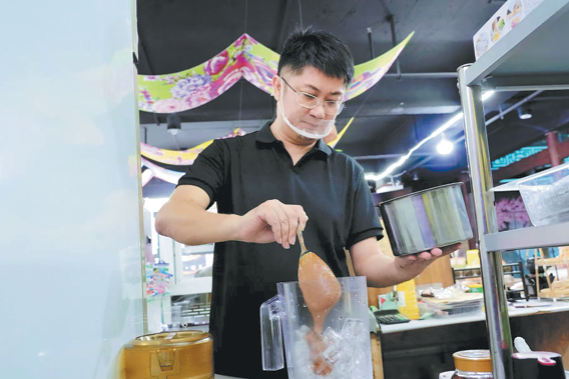Concept is still in the early stages

Most Chinese people are unfamiliar with, or lack information about, hospices, especially families who have not experienced end-of-life care.
Instead, deep-rooted taboos about death make relatives of terminally ill people feel pressured into opting for life-prolonging treatment and refusing to discuss hospice care or even the patient's true condition.
In 2015, the Economist Intelligence Unit-the research and analysis division of the Economist Group-ranked China 71st out of 80 countries in the provision of hospice care, based on factors such as access to such establishments and community engagement with end-of-life services.
In October 2017, the National Health Commission issued a guideline for hospice care, selecting five pilot regions, including Beijing's Haidian district and Putuo district in Shanghai, to promote such services. The NHC later said 283,000 patients enjoyed hospice care in 2018.
In December 2019, the commission announced the establishment of a second batch of 71 pilot areas to provide such care.
It added that nonprofit medical institutions were free to decide the charges for such services.
The NHC also said the number of people age 65 and older had surpassed 176 million that year, accounting for about 12.6 percent of the national population.
Haidian Hospital was one of the first pilot areas in Beijing. The hospice department has two wards, each with three beds, and a single-bed ward for patients very close to death.
In addition to doctors and nurses-who are shared with the departments that treat tumors and blood diseases-social workers, psychologists and volunteers work, unpaid, to provide affordable care and help patients die with dignity.
The team makes a customized care plan for each patient according to their particular needs.
Zhang Wei, one of the founders of the hospice project, said members of the volunteer group have access to training in life-and-death studies and hospice care to allow them to adapt to the experience of witnessing death frequently and to gain a deeper understanding of the meaning of their work.
Discussion sessions are regularly arranged for team members to share stories about patients and express their feelings, both negative and positive, so they can leave them at the hospital and not have their daily lives affected.
To date, Haidian's hospice care department has received more than 300 terminally ill patients.
Qin Yuan, the department's director, told Beijing News that the development of hospice care is still in the initial phase as a result of insufficient training resources, absence of legal support, inadequate funding and human resources, and a lack of education about life and death.
"Funding for social work and establishing the discipline are the major challenges faced by hospice services in China," she said.
Hospice care departments at public hospitals do not profit from prescribing pain-relief drugs to patients and they only charge fees for accommodation.
He Zhu, daughter of a patient in the Haidian hospice department last year, said the cost of her mother's 15-day treatment was about 13,000 yuan ($2,000), but the family only paid 900 yuan as the rest was covered by her mother's medical insurance.
Qin said such sums barely cover the cost of maintaining a professional workforce.
"Most of the social workers and volunteers are driven by love and compassion, but they are unpaid, which makes it hard to maintain a long-term commitment," she said.
At a meeting of the Beijing Municipal Committee of the Chinese People's Political Consultative Conference last month, committee member Ou Yunsong, a physician at Haidian Hospital, proposed that hospice care should be promoted in the capital.
He suggested raising the number of beds to meet the growing need for hospice care and accelerating related regulations, such as qualifications for practitioners.
- Innovation sustains Beijing's winter crayfish palate
- Chinese research named among Physics World's top 10 breakthroughs of 2025
- Taiwan's ban of mainland social media app a case of political manipulation: spokesperson
- Five people face charges over deadly school fire in Henan
- Mainland to help Taiwan businesses seize development opportunities: spokeswoman
- China creates over 12 million new urban jobs in the first 11 months





































